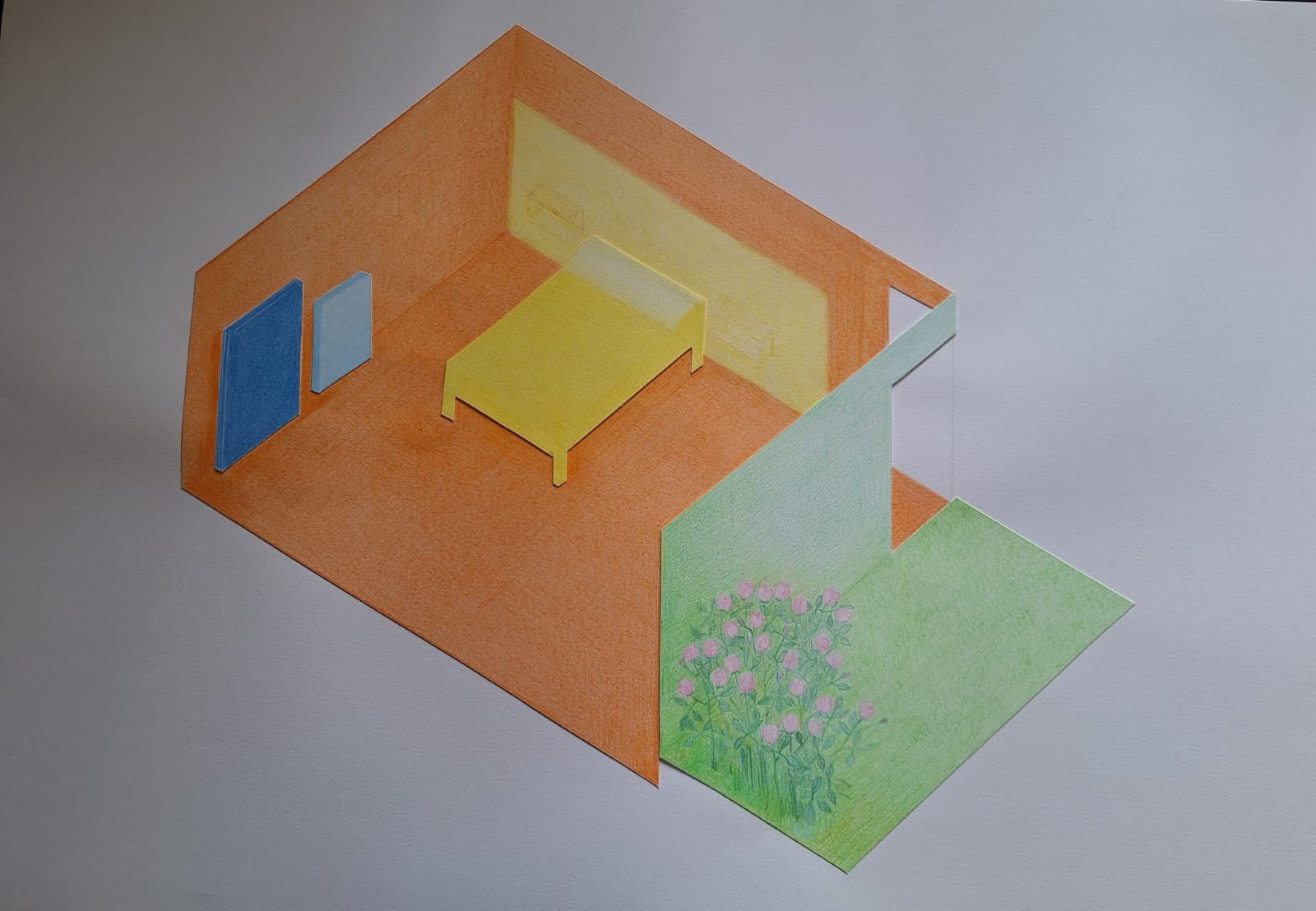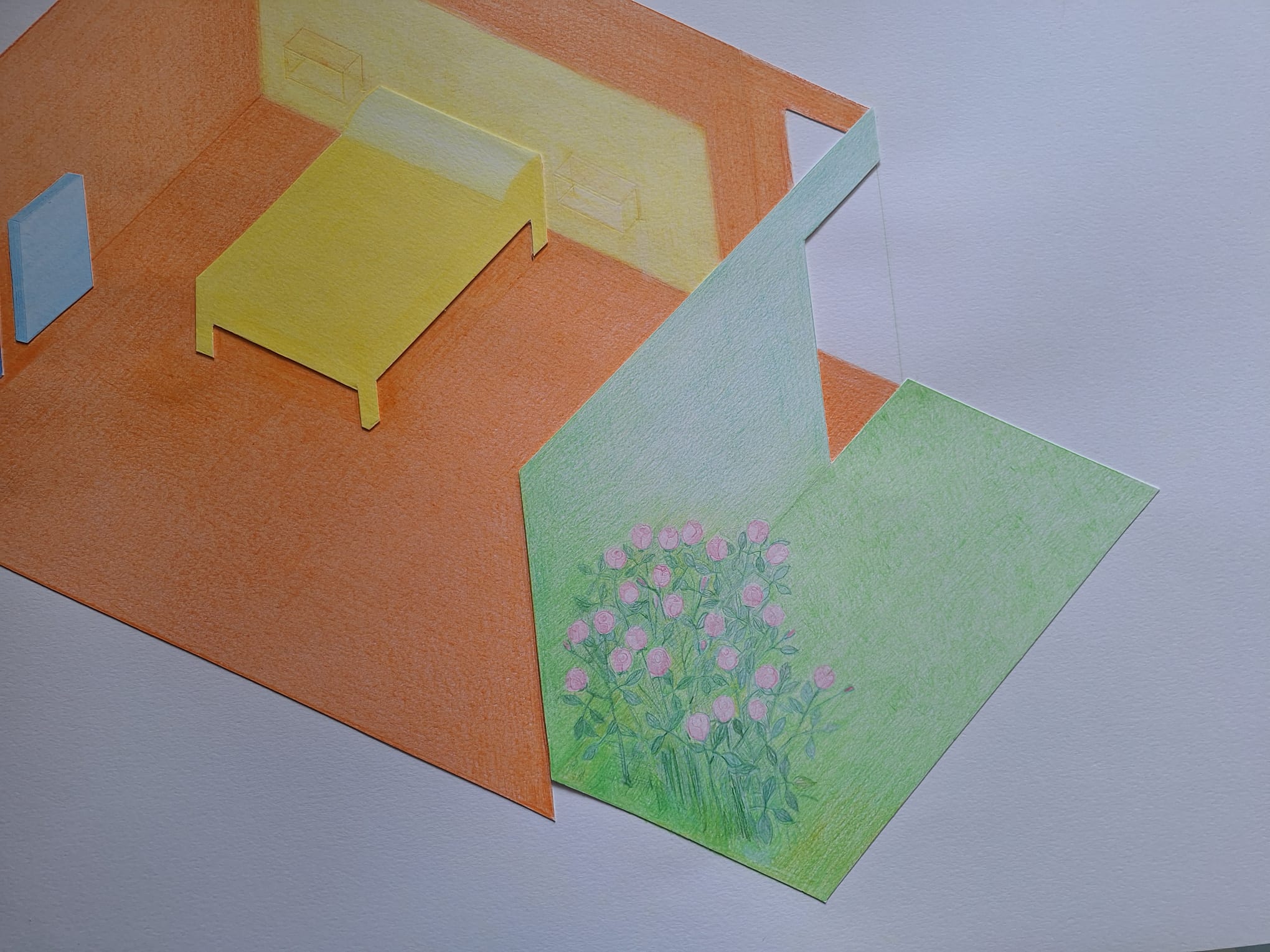The psychohabitation is a discipline that encompasses any type of built space, however it is in the bedroom where most of the action is found. Take advantage of the dream state, the subconscious and memory to achieve a greater knowledge about ourselves and the spaces we inhabit.
The psychohabitation is indicated for people who want to know and explore themselves through the spaces they have inhabited or inhabit.
Therapies: Below I present a series of room psychotherapies that work on different topics: CBT Childhood Bedroom Therapy, BT Bedroom Therapy, CBT Current Bedroom Therapy, HRT Hotel Room Therapy, HRT Hospital Room Therapy.
I would have an initial meeting with you to see what therapy would best suit your space issues.
Dear viewer:
Psychohabitation is a theory focused on the analysis of the action and effect of inhabiting.
As soon as we leave the womb, we need another cabin to protect us. Thus begins the course of our life through a series of rooms that collect our body and our mind.
The history of our life is marked by these spatial experiences, especially the bedroom, in which we enter the subconscious.
Psychohabitation allows you to analyze all the rooms and outstanding spaces, in order to obtain information about us, which allows us to know and improve ourselves.
You will receive the following questionnaires..
- BASE Questionnaire: establish your profile.
- CHBT Childhood Bedroom Therapy: focused on the room(s) you lived in as a child.
- BT Bedroom Therapy: Focused on the bedrooms of your life.
- CBT Current Bedroom Therapy: analysis of the bedroom you currently occupy.
- Spatial variables: information about the qualities of the spaces in which you live.
- Dream room: after analyzing the above information, we will choose a room with which to establish a special bond.
Before answering the questionnaires it may be useful to review them to get an idea of the whole. It is very important that you let yourself be carried away by the immediacy of your memories and your intuition.
Once the questionnaires are completed, we will have a meeting to work with the information obtained..
The experiences of the infant period are of great importance in the future development of the adult individual. Just as we learn our behavior patterns, the learned space settles in us. Our childhood spatial experiences, especially our children’s bedroom, determine our future preferences in relation to safety, security, comfort, harmony.
CHBT is useful for resolving potential conflicts or adult trauma that may be caused by bad spatial experiences. But its usefulness goes far beyond allowing us to gain insight into ourselves and our spatial preferences.
Questionnaires:
Our bedroom is a very important space in our life, we spend our sleeping hours there, during this time we need to be sure that nothing and no one will take advantage of our vulnerability. We all have what we consider our bedroom and the one we return to feel safe in our bed. The bed is the central point of the bedroom and has a great symbolic charge, it not only collects us to sleep, it is the medium for the dream world and the subconscious; it is the place of rest, of relaxation, of sex, but also of illness.
There are many bedrooms and beds that we have occupied throughout our lives and there is probably one that you consider YOUR bedroom, above all others. It also depends on the vital moment in which we find ourselves.
Considering the great importance that the bedroom space has in our lives with its physical and psychological impact, a large part of our well-being also depends on its correct harmony.
The BT is useful to resolve possible psychic conflicts that may be caused by bad spatial configurations of the bedrooms that we occupy. It allows us to get to know ourselves better about our tastes and housing needs, connect with the dream state and our subconscious. BT can also be used in processes of insomnia or hypersomnia.
As a complement, you can also perform Children Bedroom Therapy
Questionnaires:
Our bedroom is a very important space in our life, we spend our sleeping hours there, during this time we need to be sure that nothing and no one will take advantage of our vulnerability. We all have what we consider our bedroom and to which we return every night to feel safe in our bed. The bed is the central point of the bedroom and brings together a great symbolic charge, it not only collects us to sleep, it is the medium for the dream world and the subconscious; It is the place of rest, relaxation, sex, but also of illness.
Bearing in mind the great importance of the bedroom space in our lives with its physical and psychological incidence, a large part of our well-being also depends on its correct harmony. The great dominance that the design of the architectural space exercises over our lives means that its configuration does not correspond in many cases to our needs.
TDA is specially designed to solve any problem that we consider depends on the configuration of your current bedroom. If we affect him we will be affecting our well-being. TDA can also be used in processes of insomnia and hypersomnia.
As a complement you can also perform Childhood Room Therapy
TDA offers 3 job possibilities:
- Get to know yourself and the bedroom you occupy better.
- Build a scale model of your bedroom so that you can modify it and perform mental access.
- Directly transform your bedroom to meet your needs.
Questionnaires:
Hospital admission is often a disturbing experience. To the worrying situation of the disease is added the stay in an unknown, aseptic place, which places you in the reality of the disease. The hospital room is usually a clinical, impersonal place, in which our body and our mind do not find the shelter of the known and proper space.
We cannot modify the reality of the disease, but we can minimize the experience of the hospital space.
The innovative therapy that I propose affects your imagination and your subconscious: if you have the opportunity to change the hospital room according to your wishes, the memory you will have of your time in the hospital will be that of having stayed in the modified room in a model.
THERAPY ROOM OF A SPECIFIC HOSPITAL FOR INFANTS
The Hospital Room Therapy adapted to the area for infants can be very useful for the experience of your baby’s hospital admission.
THE IDEA IS THE FOLLOWING
Designing the hospital room setup to create the much-needed closeness between mother, father, and child. The child needs to feel the love that your presence transmits, and this can be enhanced with the desired transformation of the room, taking advantage of the energy of a pleasant place.
HOW DOES IT WORK?
- You receive the model of the hospital room in which you are.
- You have the possibility to transform the model according to your wishes. You can change the color in its entirety: walls, ceiling, floor, furniture (modify the layout of the furniture, add or remove some element), remember that you share a room with other patients and family members.
- The reduction of scale allows you the visualization of the totality and the mental access. Once you have transformed the model, concentrate on living in it. The model becomes the place of your stay in the hospital.
- The therapy ends up transforming the model space into your ideal hospital room. In the future when you remember your time in the hospital, the room you remember will be the one created by you, according to your wishes and needs. In this way we minimize the experience of the hospital space.
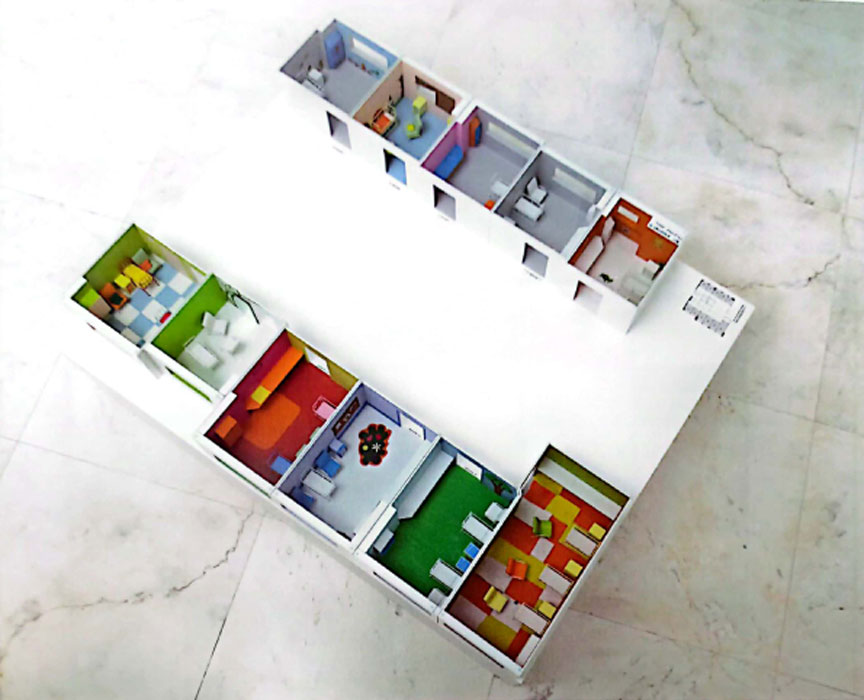
Questionnaires:
The journey has always been linked to the evolution of the human being, thanks to it a large amount of knowledge and experience has been obtained. The way of traveling evolved along with human life and currently the possibility of starting a trip is immediate and the offers are unlimited. Any trip can be imagined and achieved, even the long-awaited space trip still within the reach of very, very few.
On the trip we have to move our body and find accommodation for it at the destination, the hotel is the place where you will receive security to spend the night. Due to this circumstance, the hotel room appears to us as the ideal place to carry out therapy. Our body and especially our mind suffer alterations in the process of the trip, it is these alterations that we can take advantage of to influence issues that interest us. In this case, the dream state will serve to work on our subconscious, the therapy being much more effective. THHO offers several job possibilities:
1. Design a trip with a purpose. Organize the trip conducive to therapy, design a travel model in advance and travel with it.
2. Design hotel rooms in different places to carry out therapies:
- Work with a scale model of the hotel room. This model will be transformed for each guest with a specific purpose. Its operation is based on mental access to the model in relation to the space it occupies.
- Directly transform the hotel room to live and experience a specific therapy.
Questionnaires:
Casos
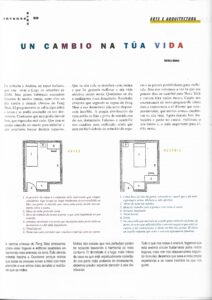
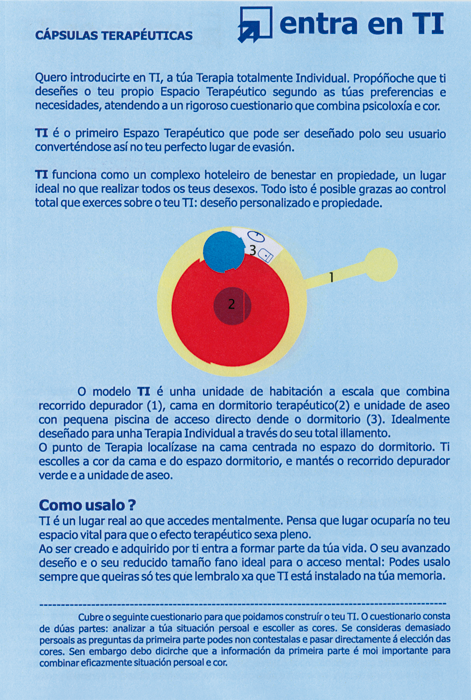
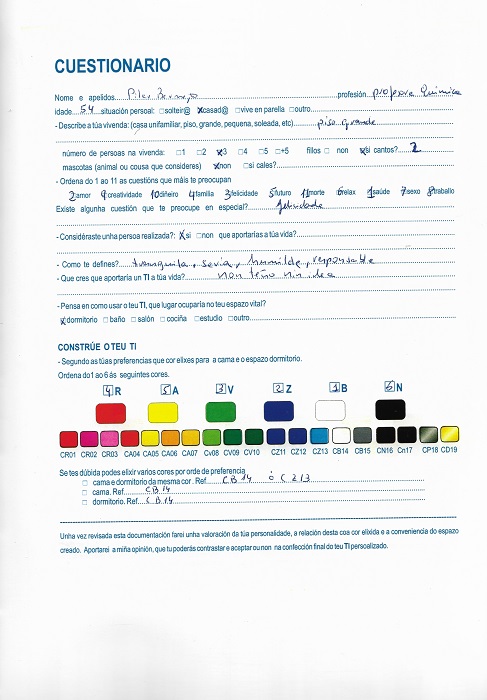
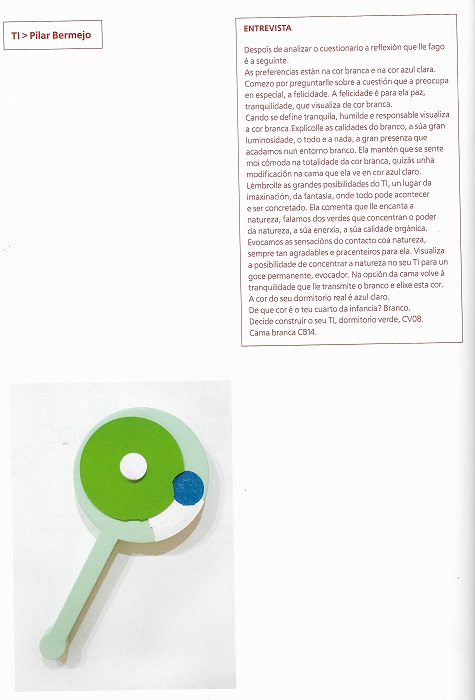
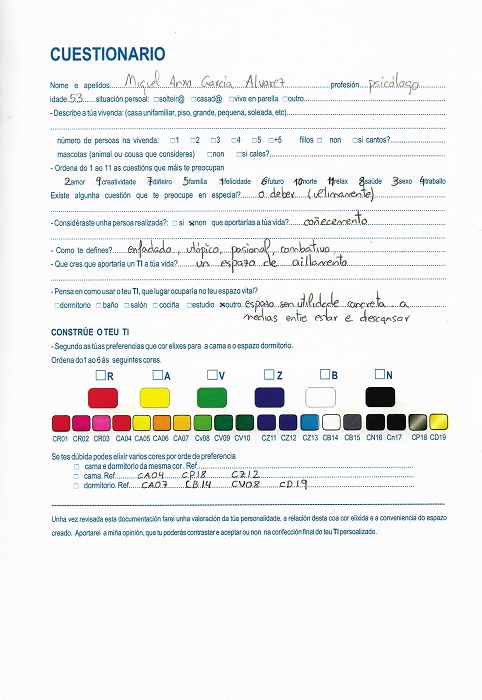
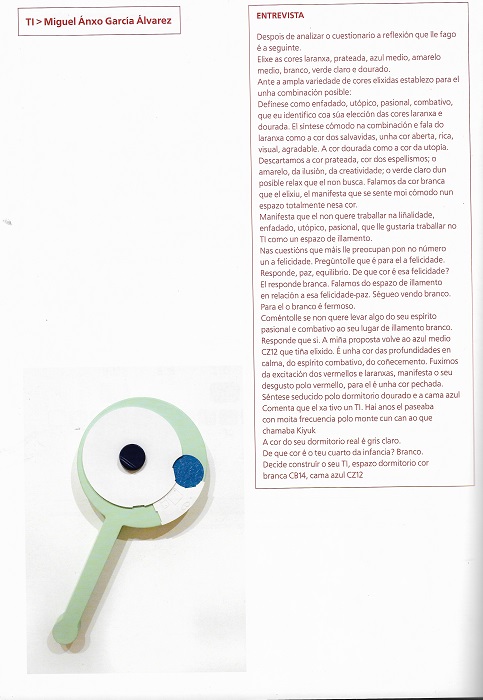
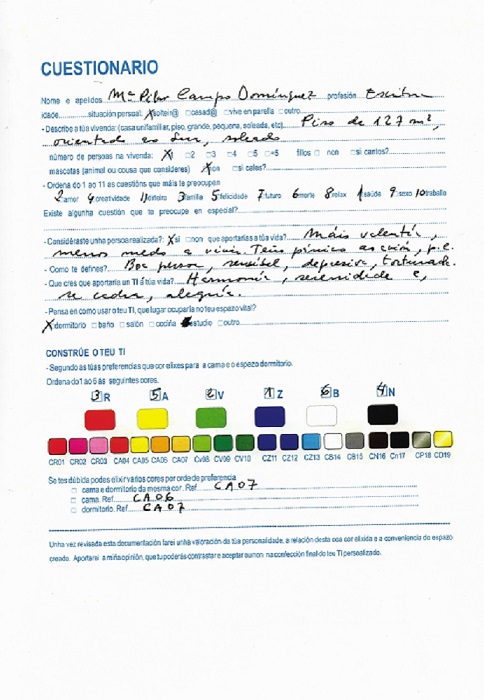
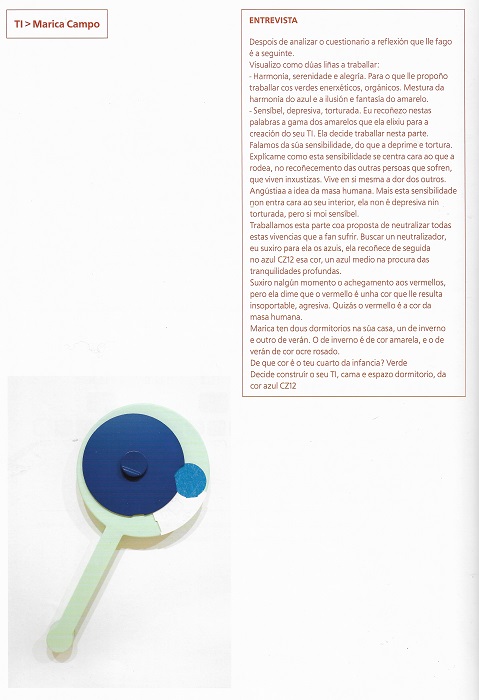
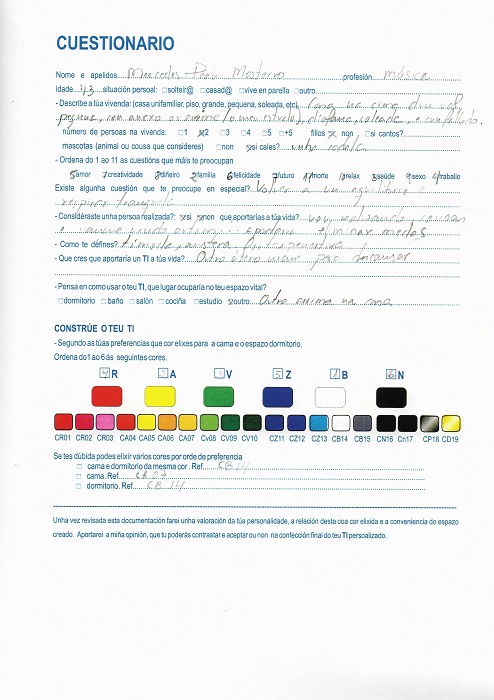
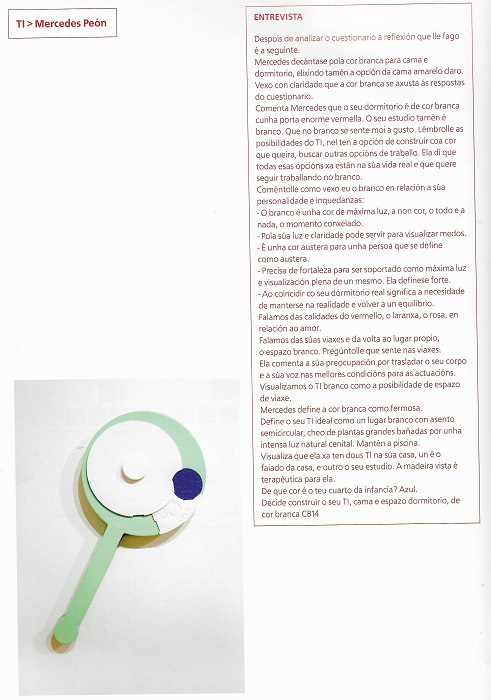
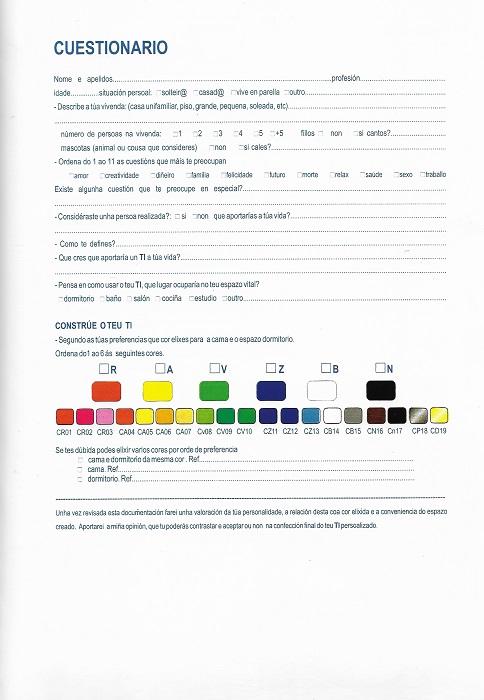
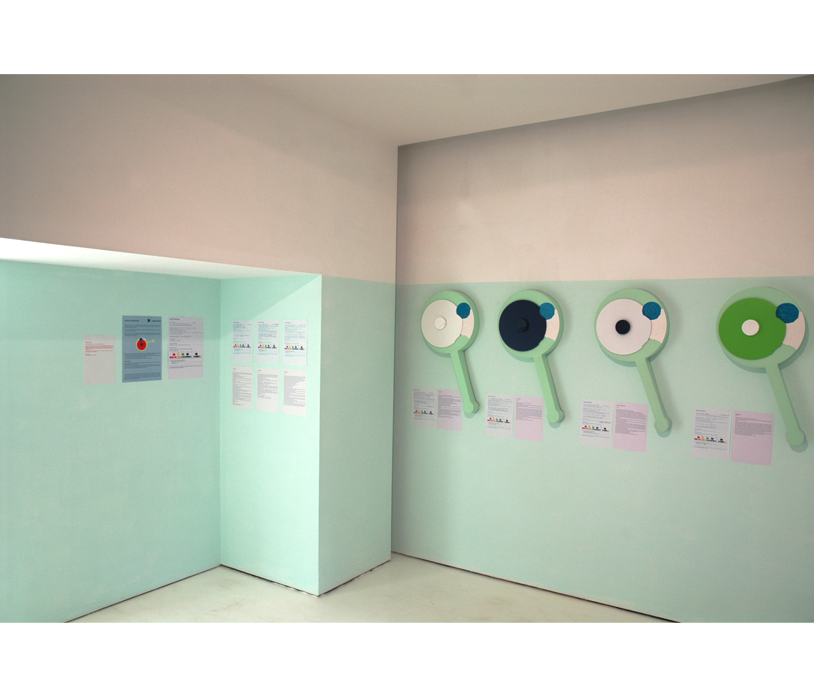
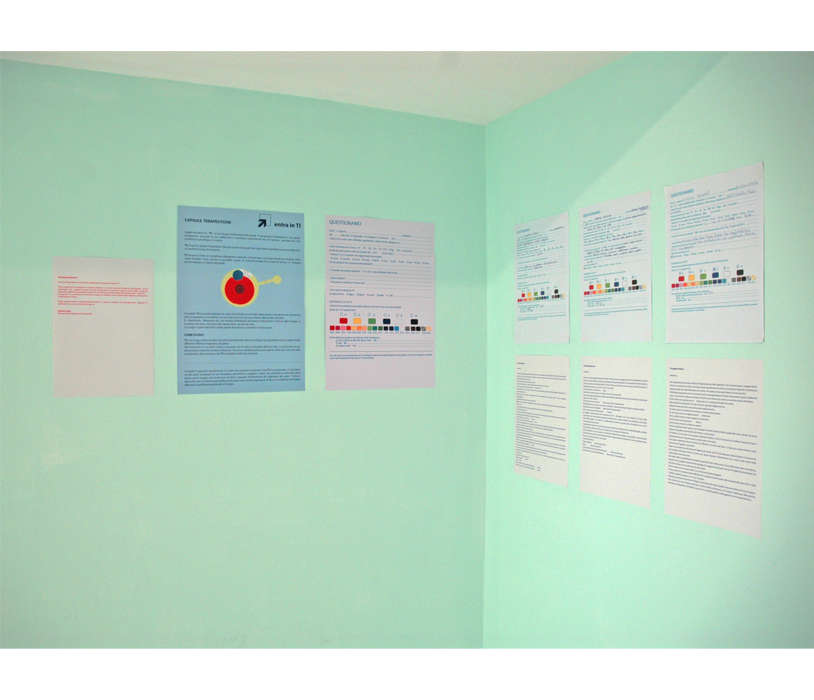
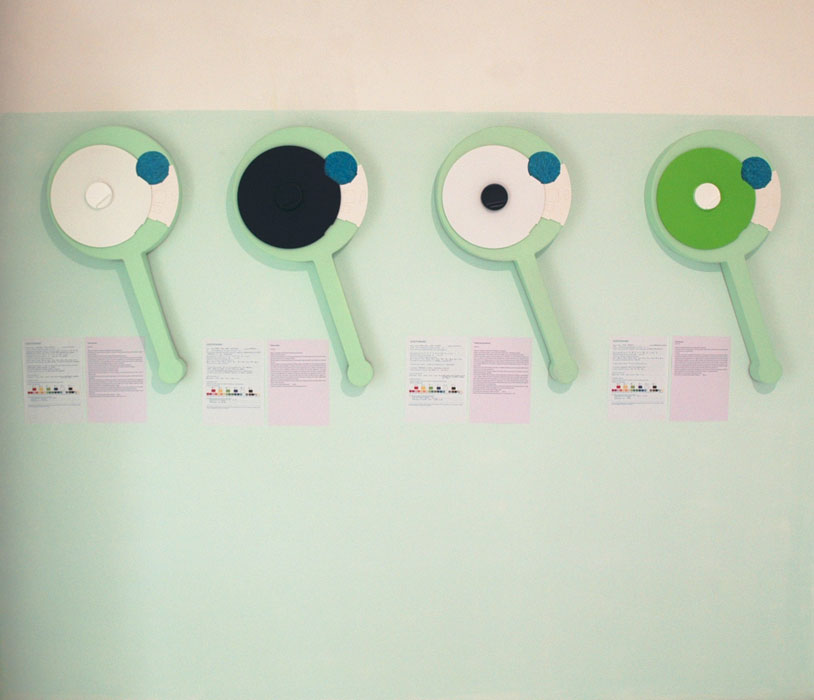
This is the case of a woman who wants to work on the death of her mother when she was 12 years old. She is currently 32 years old.
There is a real space that connects her to her: the storage room of the apartment where they live. It is an enclosed space with a green metal door.
Her idea is to transform this space into a place of encounter and well-being. The space has no window, and the walls are covered with shelves and her mother’s clothes in garbage bags.
She dreams about the space, and it begins to clear itself of elements. A window appears, and everything is organized until she reaches a chair-bed that leads to a field and a river.
She builds a model with her mother’s clothes that she collects from the garbage bags in the storage room.
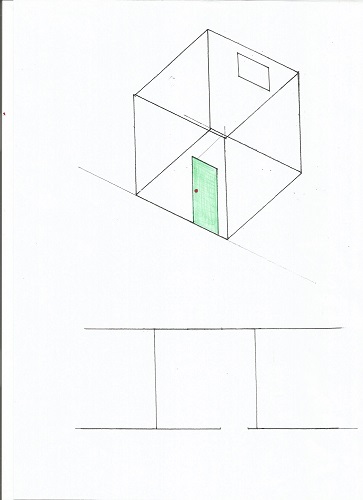
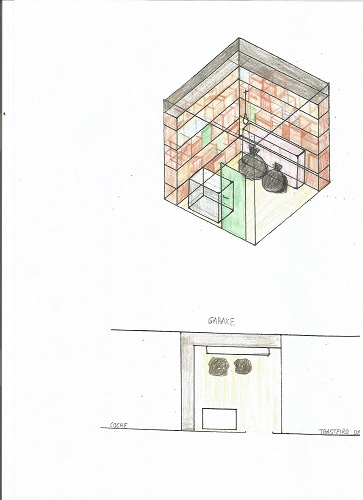
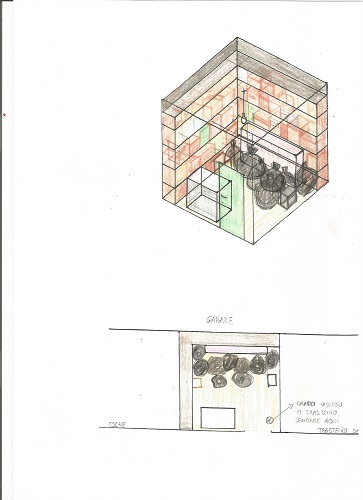
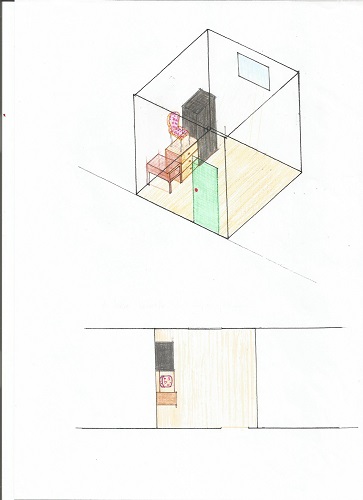
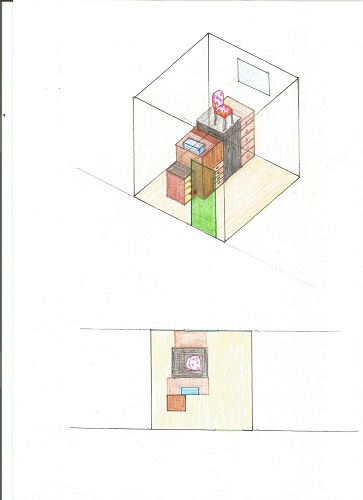
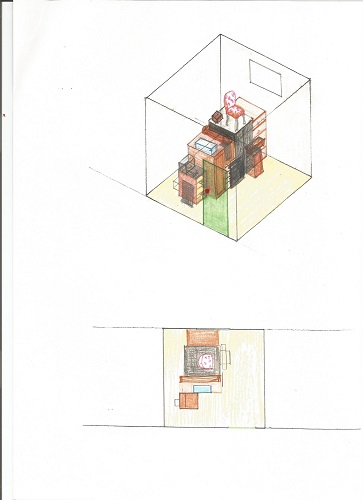
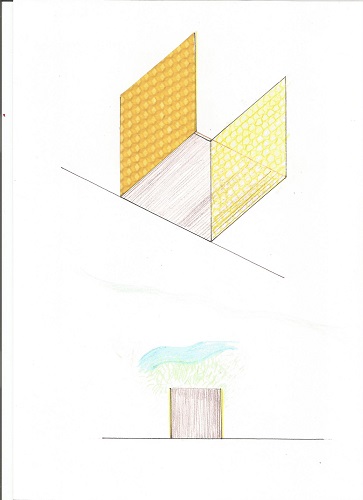
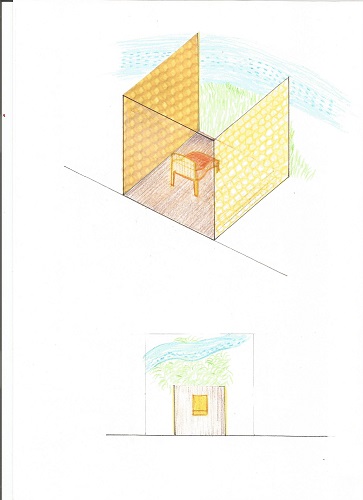
She is a lively, cheerful, empathetic, creative woman.
She is very close to her family, whom she values greatly. In fact, although the house has been modified, she lives in the same place where she was born and spent her childhood, which she remembers as very happy.
After analysing the spaces she describes, the one she values most is her childhood bedroom, which she describes in great detail, both in terms of its features and its atmosphere. The recreation is complete, so I can draw it in great detail, especially the bed.
In the section on whether she dreamed about her childhood bedroom, she recounts a recurring dream: she slept with her aunt, her bed was against the wall, and she slept on the side closest to the wall. She dreamed that the bed was separated from the wall, that she could get out of bed on that side, and that there was a window from which she could see what was on the other side, a large field with trees and a river.
She also spoke of an intermediate bedroom, with a sloping ceiling, where she could see the sky from her bed.
I drew the two bedrooms.
PROPOSAL
Create the childhood bedroom modified according to the dream: separate the bed from the wall, put in a bedside table and a window so she can see the field with the trees and the river. Put another window in the ceiling so she can see the sky, like in the middle bedroom.



We are dealing with a very lively, cheerful, temperamental and expressive woman.
She describes the spaces in detail, and in all of them there is a large window with a view or a terrace. Her descriptions evoke pleasant, colourful, warm atmospheres. Atmosphere: dreamy, inspiring, powerful, she spent hours there, reflective.
She talks about large beds with good mattresses and cushions. Among her favourite bedrooms is one that is large, beautiful, 40 m2, with views of the Arousa sea, mussel beds and yellow sunsets. This is quite similar to her ideal bedroom.
The hotel room she chooses is also similar to her ideal bedroom. When asked, ‘Would you like your hotel bedroom to be similar to your current bedroom?’, she says no, ‘I’m just passing through.’
The space I design for her is the ideal bedroom enhanced as a hotel room: a large bed with lots of cushions, an ergonomic red armchair, and direct access to the sea with views of the sunset.
In hotel rooms, she values large bathrooms with bathtubs, so I include a bathtub.
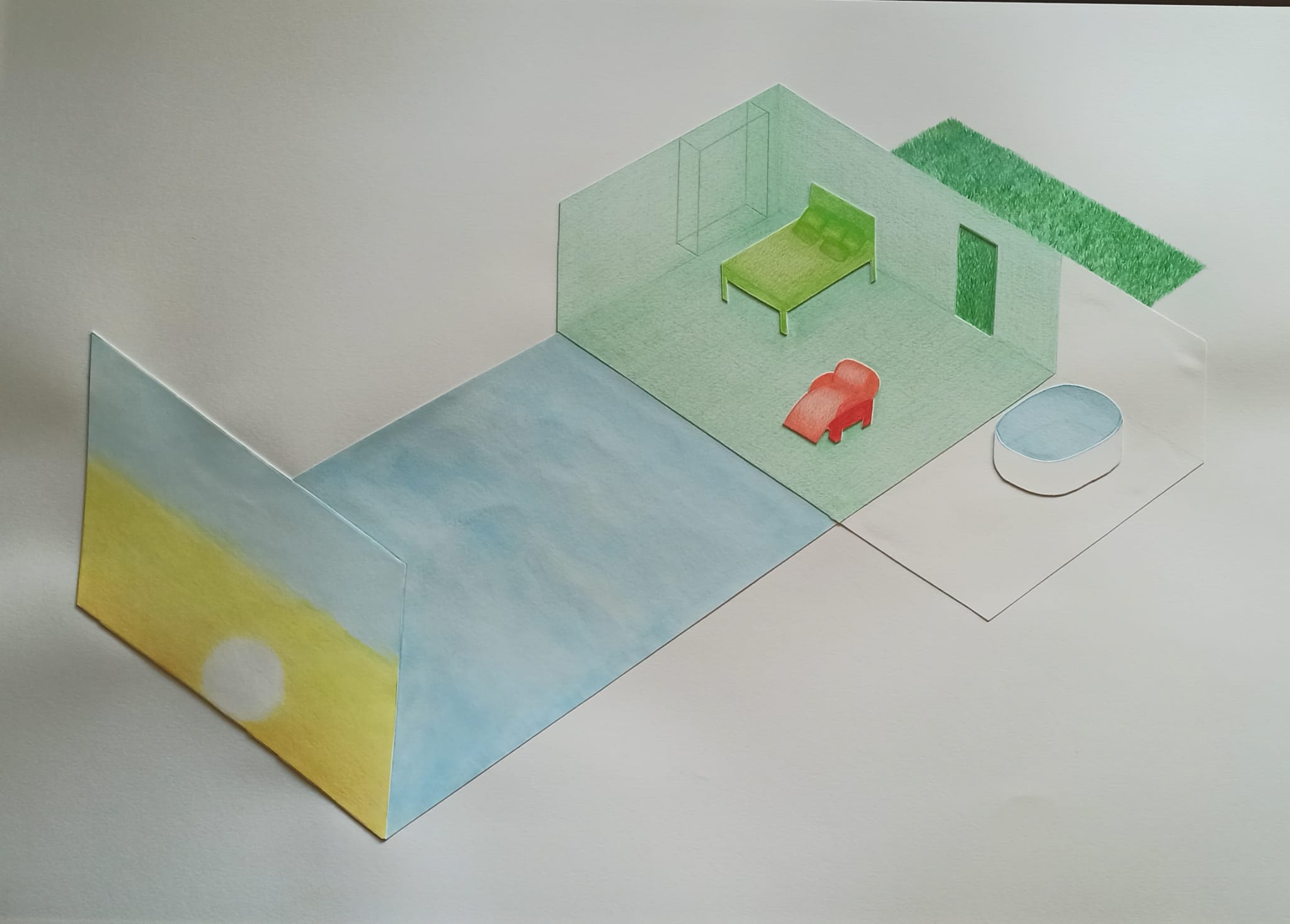
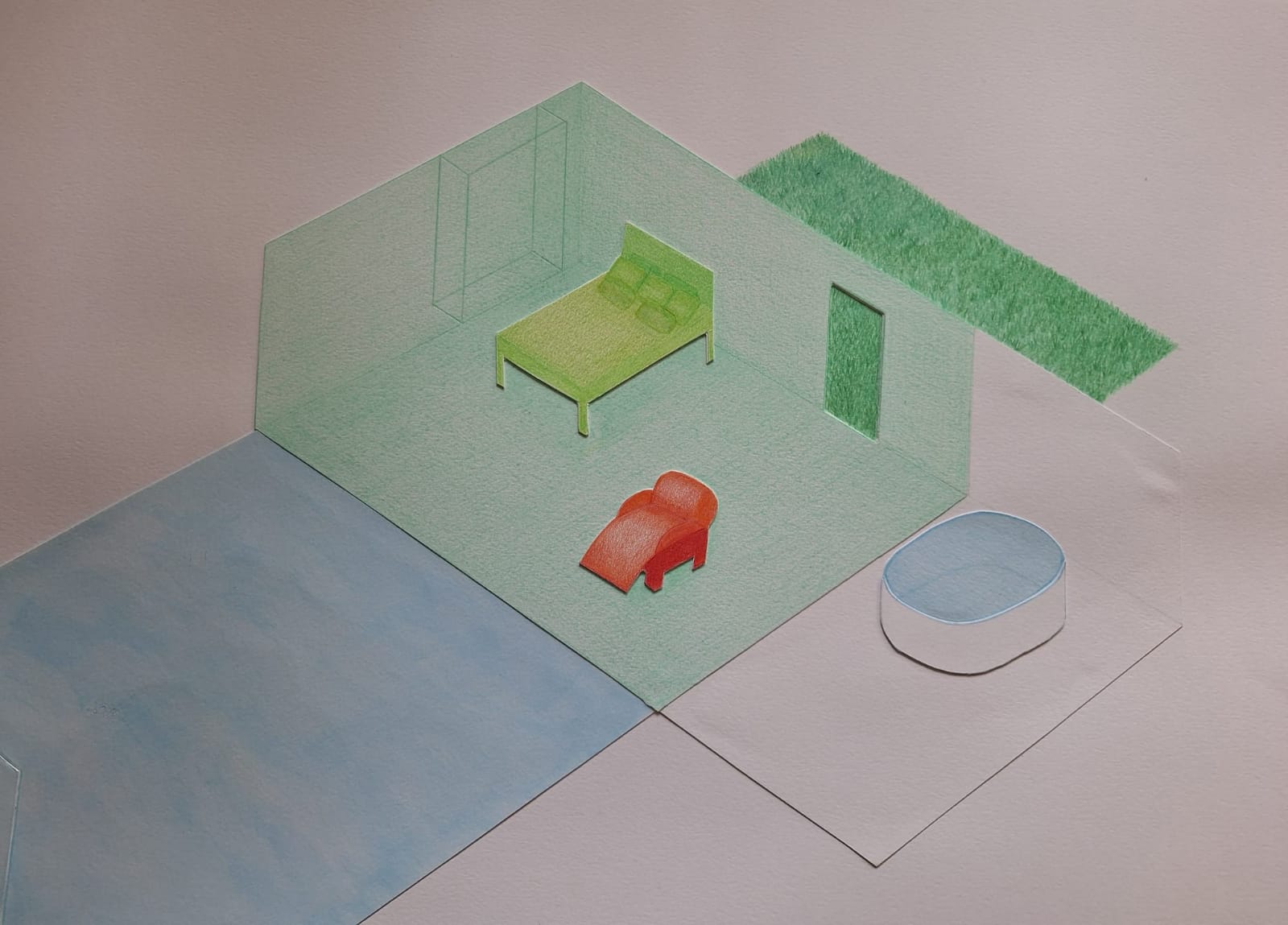
After analysing the description of the spaces, they all tend to resemble his current bedroom, which he defines as: My bedroom is ideal because it is what I wanted in its design.
I then choose his current bedroom: spacious, with soft tones on the walls and an earth-coloured headboard. A pleasant and clean atmosphere – smooth and calm. What he likes most about it is the visual relaxation and temperamental dreams. Size: 20 m2. He provides a detailed plan of it.
I draw this bedroom and choose the colours based on his colour preferences:
- Orange CA04: happiness, health, family, childhood, head.
- Yellow CA05: favourite and present.
- Blue CZ13: relaxation and infinity.
- Blue CZ12: what colour are you?
The space is orange but soft, in line with your preference for soft colours. It brings happiness, health, family, childhood and mind. The bed is yellow, also soft, favourite and present. Mention in the description of the bedroom that there are pictures leaning against the wall and I will include two, one sky blue, relaxation and infinity, and another medium blue, what colour are you? So that you can see them from the bed. In a parallel room, I draw a rose bush. I know the person and I know that they value their garden and the roses in it very much. In this way, I include the dreamlike part present in the description. As this is a recreation of the current bedroom, I suggest that this drawing be placed in it, on the right-hand wall so that it can be seen from the real bed.
